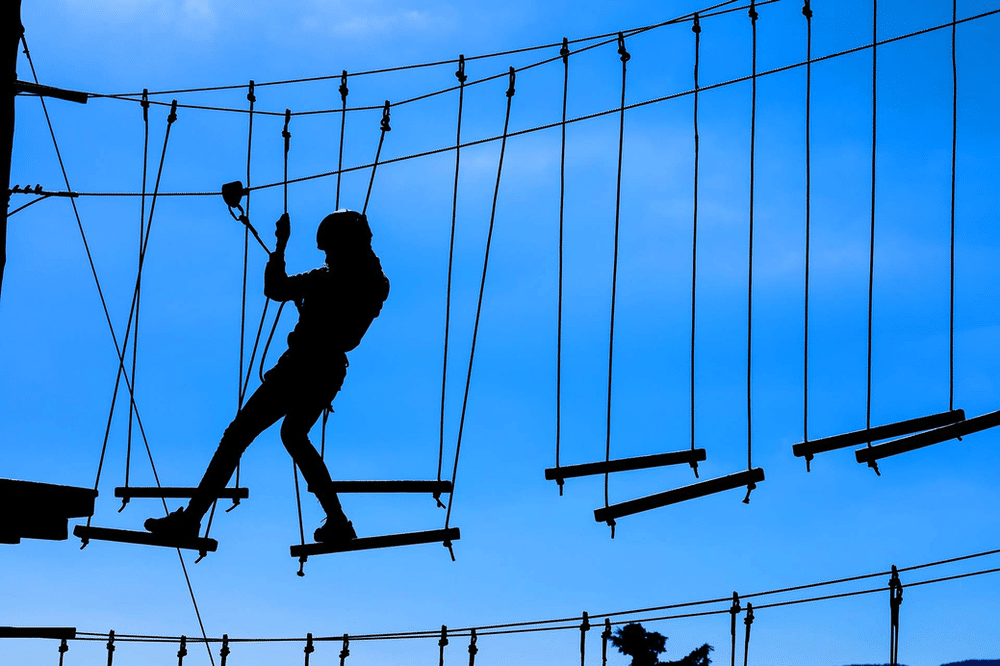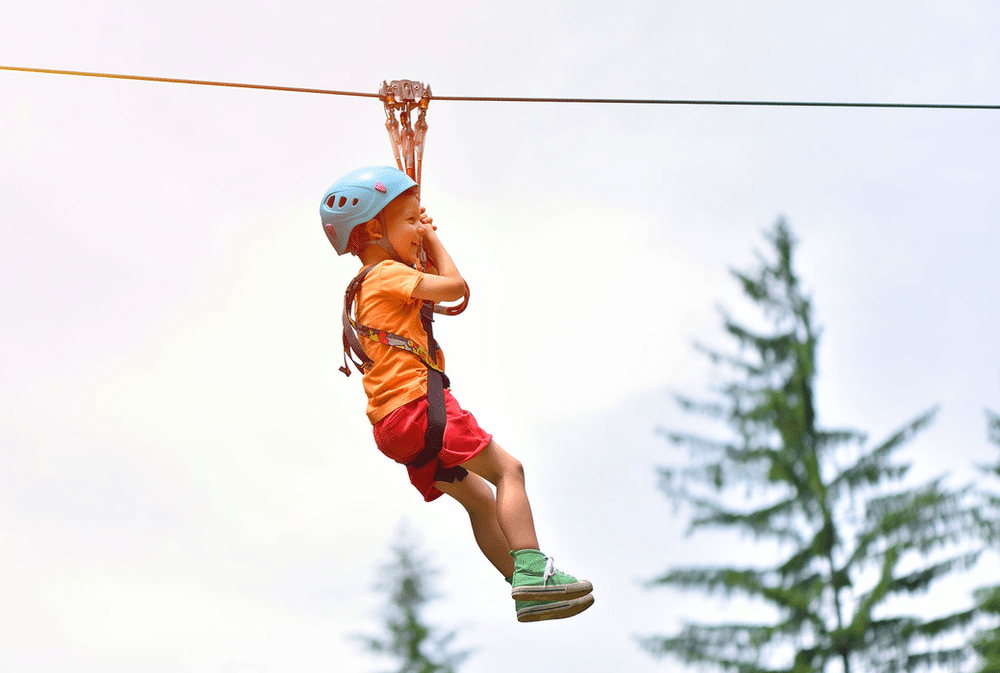
A 34-year-old facilitator was sentenced to two months in jail after failing to property attach a zipline participant to the zipline cable. The participant, a nine-year-old girl, fell four stories from the high element, fracturing her hip, elbow and pelvis.
The sentence was handed down on February 26 of this year, following the February 12, 2020 incident at a primary school in Singapore.
This follows the sentencing just six weeks earlier of another challenge course facilitator in Singapore. That facilitator was given six months’ jail time on January 15 for failing to check a participant’s harness, which slipped up towards the participant’s neck after he lost his balance and fell off a postal carrier’s walk element, causing his death by suffocation.
In the zipline case, the safety lanyard connecting the participant’s harness to the zipline pulley system is supposed to be attached to a carabiner (or rapid link/maillon rapide/quick link) attached to the pulley apparatus.
However, a small “lock slider” device was used along with the pulley apparatus. So that the lock slider component would not fall off of the pulley, it was loosely connected to the pulley system with a lightweight plastic zip tie or cable tie fastener, of the sort normally used to hold items like electrical or computer network cables together.
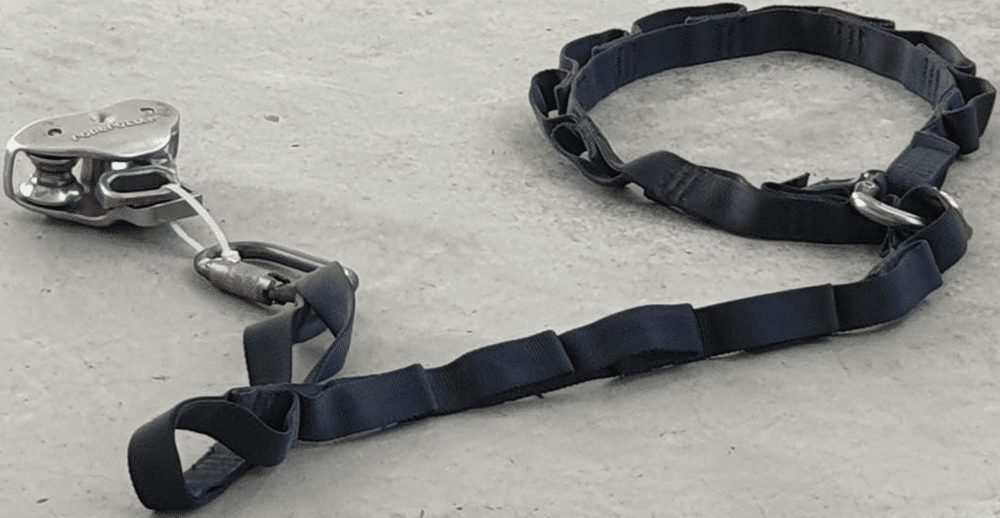
The participant’s lanyard was mistakenly attached to the little plastic zip tie, rather than to the pulley.
As the participant sped down the zipline, which ran from a platform on the fourth floor of the school, across an atrium to a landing platform on the third floor level, the zip tie snapped.
The girl fell four floors down. She was taken to the hospital for her injuries, where she remained for 15 days, for part of the time in a high-dependency unit (an area providing a level of care between intensive care and general ward care).
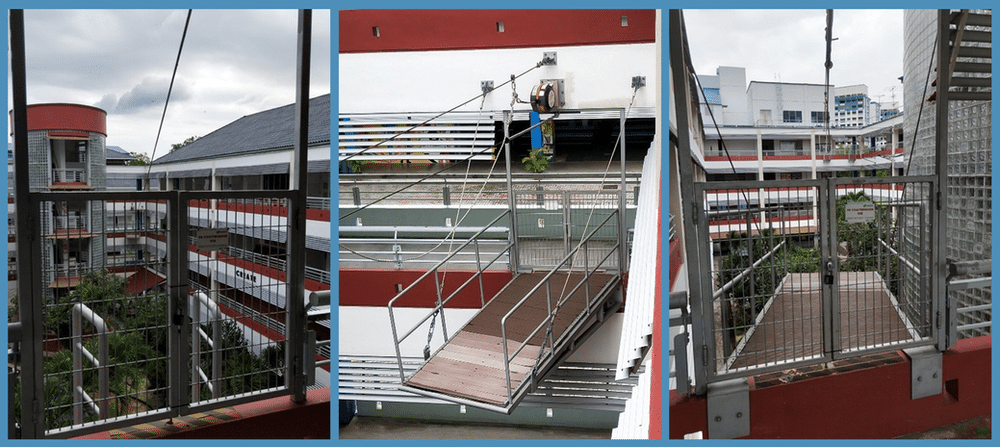
A “Selfless Individual” and “Momentary Lapse of Judgment”
The facilitator on the launch platform who sent the participant down the zipline pleaded guilty to one charge of causing grievous hurt through a negligent act endangering human life. This offence is punishable by a fine of SGD 5,000 (~USD 3,700) and up to two years’ imprisonment.
She had been a freelance outdoor education instructor for about four years, and had Level 2 Challenge Course Instructor certification through Outward Bound Singapore.
She had no previous convictions. The prosecutor acknowledged this was a one-off lapse.
The instructor, who was deeply apologetic, no longer works as a high elements activity instructor.
She developed post-traumatic stress disorder after the incident, and has been “hyper alert and obsessed about safety,” her lawyer said.
Her lawyer called the instructor “a selfless individual who put others’ safety above her own,” who made “a genuine mistake in a momentary lapse of judgment.”
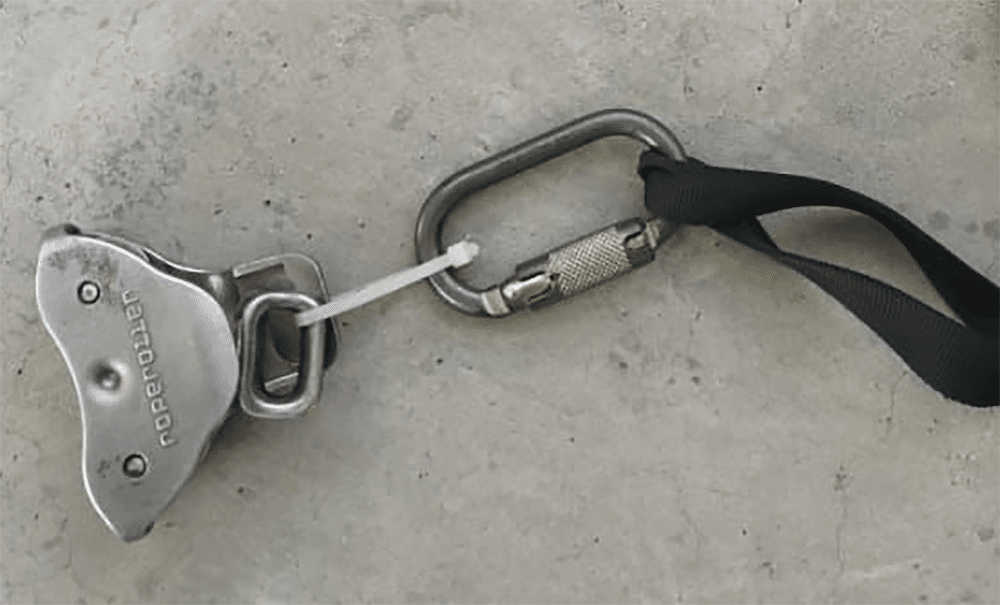
Possible Contributing Factors
Following Manufacturer Recommendations
When looking at factors that may have led to the incident, a question arises: why was there a zip tie involved in the pulley system at all? (The pulley apparatus is the Roperoller® shuttle, manufactured by on-the-ropes/roperoller of Germany.)
An post-incident analysis by a qualified Challenge Course specialist noted that “the cable tie method used by the school is incorrect,” not in conformance with manufacturer instructions, and “could and would cause confusion and mislead any instructor or dispatcher when it comes to hooking up the carabiner.”
Could the owner of the property where the zipline was installed, third-party examiners conducting periodic inspections, or an industry association establishing installation and operations assessment criteria have taken steps to better ensure that equipment was used according to original manufacturer’s direction?
Equipment Design
Why might the owner of the zipline be tempted to add a lock slider to the pulley apparatus? Was there an issue of equipment design that might have led to a lock slider being added to the pulley system?
The pulley apparatus manufacturer, roperoller, did not respond to Viristar’s request for comment.
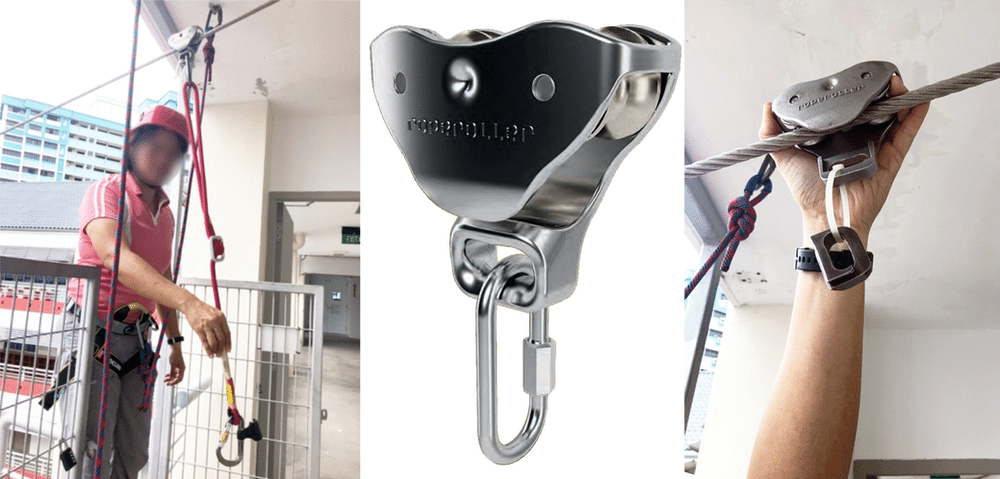
Work Task Design
In addition, a work task analysis raises the question: who was involved in clipping the carabiner to the zip tie in the first place?
The zipline process was that a participant would travel by pulley apparatus along the length of the zipline, from the fourth floor to the third floor, where a “receiving instructor” awaited. Then the participant would hand-carry the equipment back to the dispatching instructor on the fourth floor for the next participant.
It was the receiving instructor at the bottom end of the zipline, on the third floor, who secured the carabiner to the zip tie. The “dispatching instructor” at the launch platform of the zipline on the fourth floor was supposed to re-attach the carabiner to the pulley device, and check to make sure everything was secured appropriately.
Why was the work task design such that the receiving instructor might ever clip the carabiner to the zip tie, necessitating the dispatching instructor to identify when this occurs, and rectify this potentially dangerous situation?
A Systems-Based Analysis
These examples of potential contributing factors to the catastrophic failure of the safety system are a reminder of the need to view incident causation from a systems-based viewpoint.
A review of the incident from a systems thinking perspective means looking at potential contributing factors at all levels of the complex system of people and things—the complex sociotechnical system—that is outdoor adventure learning.
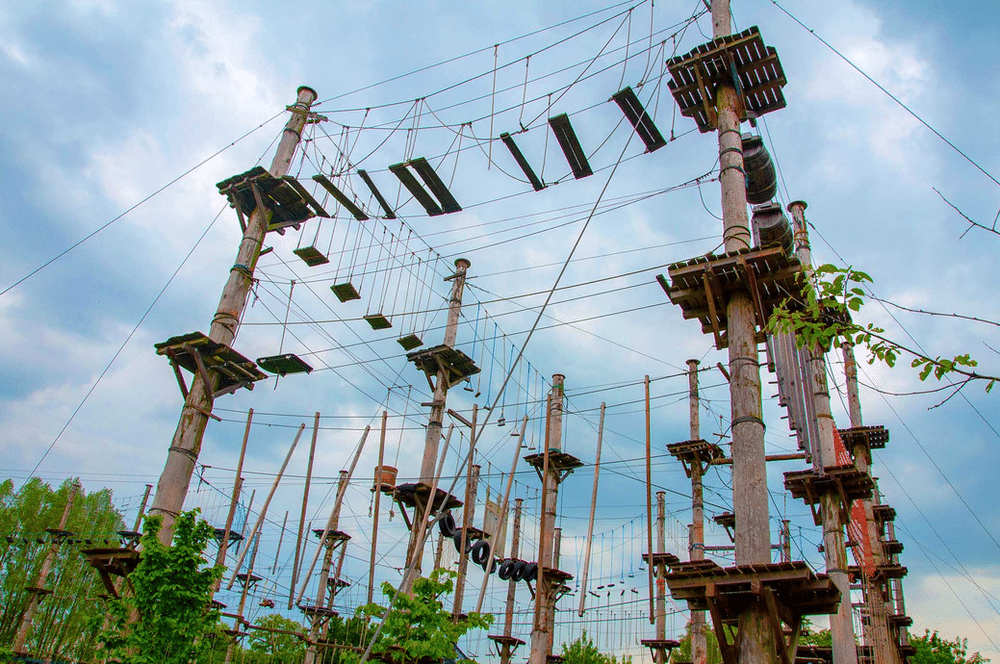
Elements of this complex system include:
- Government regulation, such as adventure safety standards, audit requirements, and compulsory certification and accreditation schemes, as well as financial or other support for the adventure activity sector’
- Industry association actions, such as the development of practitioner training and certification (qualification) systems, organizational accreditation schemes, and Codes of Practice or good practice guidelines;
- Organization actions, such as instituting company safety policies, establishing a positive safety culture, following good practice guidelines, and appropriately designing work tasks, and
- Workers directly conducting work activities (in this case, zipline facilitation) in conformance to standard operating procedures while applying good safety judgment.
After the mishap, changes were made at multiple levels of the system.
Government
Following the incident, all height-based activities in schools were suspended, and a review of processes was initiated. Safety procedures were amended, including a requirement to have an additional instructor conduct an assessment using a safety checklist before participants may use a zipline. Schools were required to verify the adequacy of instructors’ certifications and ensure a certified person is immediately available to conduct rescues.
These requirements became effective on January 5, 2021, and the high elements activities suspension was lifted. But less than four weeks later, height-based activities were again suspended, when another student fell on a challenge course, suffering fatal injuries. Those restrictions were ultimately in place for two years, being lifted in February 2023.
The government also led the creation of an Outdoor Adventure Education Council, composed of government and private sector representatives, to develop, over a period of years, safety standards and practices for a wide array of outdoor adventure education (OAE) activities held across the country.
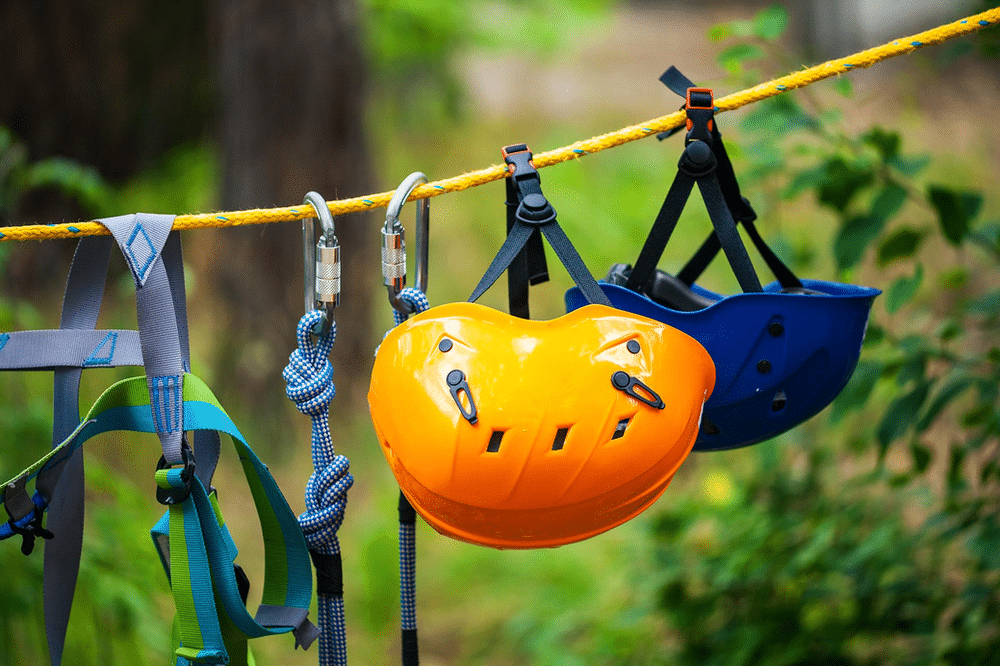
Industry association
Singapore’s Outdoor Learning and Adventure Education Association initiated a review of its Standards of Industry Practices manual, and pledged that its members will conform to the Singapore Standard for OAE activities, once it is published.
Organization
The company operating the challenge course, InnoTrek, reviewed their operating procedures and invested in continuing professional development for its staff. The organization additionally sent its entire management team through an outdoor program risk management training run by Viristar, whose director also joined InnoTrek as a Safety Advisor.
The school on whose campus the zipline (also known as a Flying Fox) was installed, Concord Primary School, now must have (per Ministry of Education requirement) a staff person with specific responsibility for safety of outdoor adventure learning, and who has appropriate training for that role.
Workers
Challenge Course facilitators and height-based adventure activity leaders, under new government requirements, must hold certain formal qualifications, such as Instructor qualification and Rescuer qualification with the European Ropes Course Association, or Level I or Level II Practitioner Certification with the Association for Challenge Course Technology.
A Systems-Informed Response
It’s worth noting that quality improvements were identified and implemented at all levels of the system. However, only one individual—genuinely remorseful, and suffering from post-traumatic stress following the incident—was singled out for punishment, in the form of jail time.
In a truly systems-informed response, which seeks to most effectively reduce the probability and severity of future incidents, and which exhibits Just Culture and a trauma-informed approach to restorative justice, there might be an alternative response to what the government acknowledged was “a one-off lapse.”
The facilitator’s lawyer requested lenience for the defendant. She said, “My client has suffered enough.”
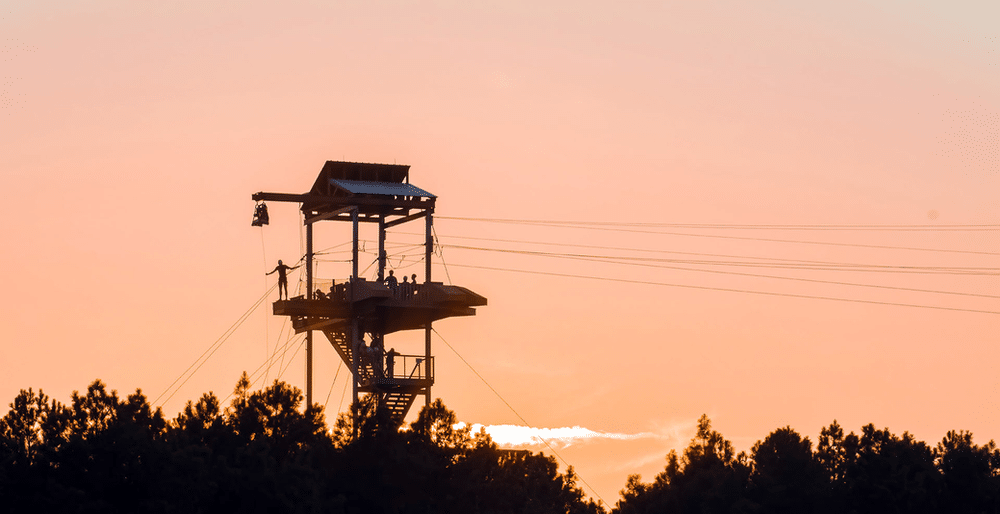
The Community Responds
The outdoor education community in Singapore responded thoughtfully to the incident.
Gene Kam, a longstanding fixture in Singapore’s outdoor adventure learning community, is a former Deputy Head at Outward Bound Singapore, and teaches in the Outdoor Adventure Learning Diploma programme at Republic Polytechnic. He encourages adventure educators to involve participants in observing safe practices, in support of “collective safety.”
This could involve, Gene suggests, sharing a mnemonic with participants, such as “ABCD”— Anchor, Belay, Carabiner and Device. Both the participant and instructor could verbalize this term before launching down the zipline, to help ensure that both are actively engaging in safety checks.
Gene also suggested posting images of proper equipment use to inform the participant of their correct application. Instructors could then ask the participants to conduct an additional safety check using this reference information.
Delane Lim, Secretary-General of the Outdoor Learning & Adventure Education Association, emphasized the importance of approaching outdoor incidents with a systemic lens, and retaining a focus on underlying issues that lead to a mishap.
“We must be proactive and prioritise systemic review and continuous improvement in safety standards,” he said.
(Delane Lim is also Co-Founder of FutuReady Asia and Executive Director of Character and Leadership Academy, for both of which Viristar’s Director serves as Safety Advisor.)
Delane’s comments are echoed in social media commentary on the incident, where one poster noted, “The lesson should be ‘improve the safety so that it’s not one human error away from tragedy’ rather than ‘be perfect at your job or else go to jail.’”
